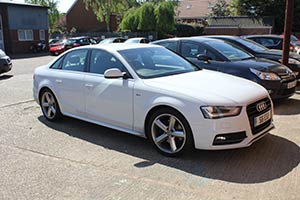
A good successful business is a growing business. As companies expand they often need to take on new facilities and premises as the workforce grows. In order to accommodate employees who’re travelling to a workplace it may be necessary for a business to create their own car park. What kind of basic steps are involved in the process and what kind of equipment is available to businesses looking to set up a car park?
Consultation
The first step in setting up a business car park is to set up a consultation committee who looks at the various costs involved. Other options should be explored such as car pooling and the possibilities of subsidising workers' travel on public transport. If the business decides that a car park is the best option, then the committee should look at possible sites near the business unit. It may be that the business does not wish to go through with the large scale expenditure associated with purchasing a piece of land outright and can opt to lease a site for a car park instead.
Planning
There are a number of factors that should be taken on board when planning a business car park. It is important to look at the number of spaces needed and when they’re needed – for instance, does the business employ people who work at night? What is the maximum number of spaces needed? They should also take into consideration car parking spaces for clients and visitors as well as allowing space for the expansion of the business. It may be necessary for the business to provide a number of different types of parking – a car park may also have to provide spaces for workers who travel into work by motorbike as well as cycle racks or lockable cycle sheds for those who prefer to travel in by bike.
Implementation
When a business has settled on a site this can be in a variety of different conditions – it may be that they decide to purchase a piece of undeveloped land and then build their car park from scratch, in which case they will need to dedicate a project manager to the installation and employ a third party company experienced in the construction aspects of creating a car park. Ideally the business will put the contract out to tender with a number of suppliers to find the best deal.
Car Parking Barriers
Barriers can be a very effective way of controlling vehicle flow into and out of your car park. They are especially useful if you’re thinking of setting up a car park in a busy area, preventing unauthorised use of the parking spaces. There are a number of different types of barrier available for different purposes. These include:
- Locking Barrier – This type of barrier available either as a gate or a bar and is locked at one end. Car park users are issued with a key that’s used to unlock the gate, and then when they've passed through the barrier they can then lock it behind them. This obviously can be quite inconvenient in situations where the weather is bad, but on the plus side this is a very cost effective method of controlling access to the car park.
- Locking Posts – Rather than using one barrier to control access to the car park it is possible to install locking car park posts for each space. Drivers have a key to their own car parking post and space, which lowers the post using a folding mechanism so it passes under the car.
- Key Card Barrier – The next step up from the various standard lockable barriers is an electronically controlled key card barrier. Users have a special card that they insert into a terminal at the side of the barrier that then activates a mechanical arm, opening the barrier and allowing access into the car park. This system also logs the name of the person using the barrier and the times at which they accessed the car park.
- Security Guard Barrier – The ultimate in car park barriers is the security guard barrier. This system usually has a kiosk that seats a security guard who can check the credentials of anyone who is looking to access the car park. Such barriers are usually reserved for businesses working on defence contractor or manufacturing units that are producing incredibly high value items, such as luxury watches or jewellery.
Enforcement
Although businesses have employed third party management companies in the past to prevent unauthorised use of their car parks through clamping and towing schemes, this is no longer a legal practice. Laws were introduced to the UK in October 2012 that prevents such enforcement as part of the Protection of Freedoms Act. This makes it even more important for companies to find the right kind of barriers and entry systems to their car park as it may be incredibly difficult to move a rogue vehicle that’s been dumped on the premises.
What are the Benefits?
Businesses that run their own car park will get a number of benefits from it. The first is a reduction in costs – paying for private car parks for workers can run into several thousands of pounds on an annual basis. Although it may cost a little more to set up a car park in the first instance, over time it will reduce a businesses running costs. Customers and clients will also be able to park at the business's premises when visiting, making for a more pleasant journey as they won’t have to look for parking spaces, which may be especially difficult if they've travelled from another city or town. Finally if the business invests in a large car park then they can even recapture some of the capital involved in construction by charging other businesses nearby for use of the space.